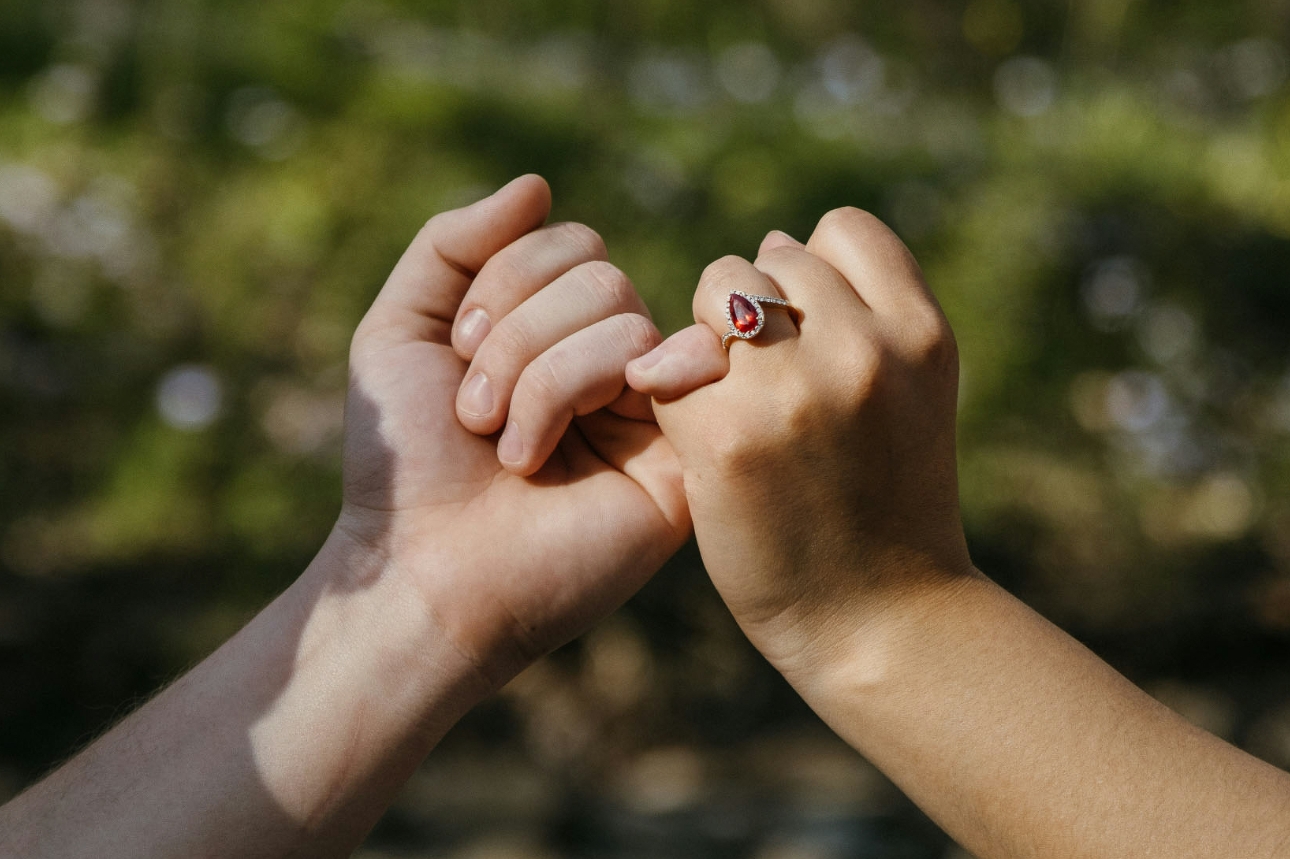All the latest wedding news for couples getting married in England and Wales, along with bridal fashion and beauty inspiration and honeymoon ideas.

The newest trend to clean engagement rings with a coffee steamer, whilst entertaining to watch, is a sure-fire way to ruin your precious ring! We have to be very careful about our jewels and must not forget that it is four simple prongs that hold in our sparkling beauties. To educate us as to why this hack should get the sack is Neil Dutta, managing director of the engagement ring specialists, Angelic Diamonds.
According to Neil Dutta, "using the steam wand can dislodge stones that aren't securely set, especially in rings with prong settings or older jewellery where the settings may have weakened over time." He further notes, "This is even more risky for rings with prong settings or older jewellery, where the settings may have weakened over time."
Moreover, he highlights the risk of thermal shock: "the steam will rapidly heat the stone, then cool it down, which can cause internal stress and lead to cracking or splitting."
Neil highlights that some stones are particularly vulnerable to this method of cleaning.
Emeralds: these contain natural fractures that are typically filled with oil or resin. Steam will strip away these protective treatments, making them prone to cracking.
Opals: the worst possible candidate for steam cleaning. Opals contain water content, and the thermal shock causes "crazing" - a network of tiny cracks that permanently destroys the stones play-of-colours.
Pearls: organic gems are particularly delicate. Steam degrades the nacre layers, causing peeling and loss of lustre. It can also divide the silk threads in strand necklaces.
Tanzanite: this stone splits easily along cleavage lines. Just one steam session could ruin a tanzanite's structural integrity.
Moonstone: Its characteristic adularescence is easily damaged by thermal shock. You'll see the beautiful sheen become cloudy after steam pressure.
So how can you properly clean your engagement ring?
As Neil Dutta advises, "ideally, you should have your ring professionally cleaned every few months to ensure it is thoroughly cared for."
He adds, "when using household cleaning methods, many people aren't aware of the risks. Common cleaning products like bleach and ammonia can discolour white gold, damage rhodium plating, and weaken the solder points in delicate settings."
Neil Dutta warns against using baking soda and toothpaste: "These abrasives can scratch the metal, creating severe damage that will dull the finish over time whilst trapping dirt.
Your cleaning guide
Step 1: check for damage! Before cleaning, inspect your ring to ensure the stone is securely set. If the diamond moves, have it checked and fixed by a jeweller.
Step 2: Soak in warm soapy water. Soak your ring in a mixture of warm water and mild soap for about half an hour to dislodge dirt.
Step 3: Soft brush cleaning. Use a soft-bristled toothbrush (a baby one would work well here), to gently clean the ring.
Step 4: Rinse carefully. Rinse your ring under cool running water, taking care not to drop it. This ensures no soap dries on the diamonds.
Step 5: Let it air dry. Allow your ring to air dry; avoid using a cloth as it could get caught in the prongs and avoid paper towels as the material is quite abrasive.
(Added by Isabelle Chamberlain, Editorial Assistant)